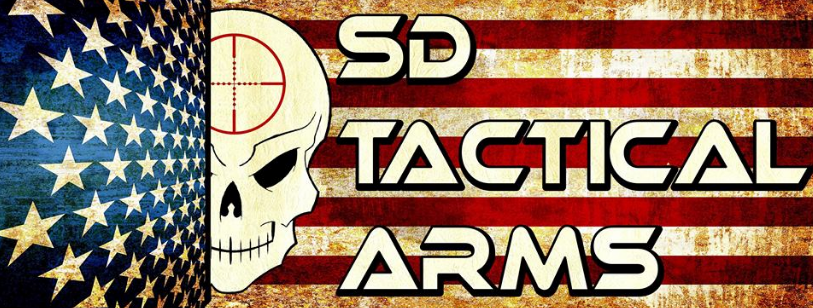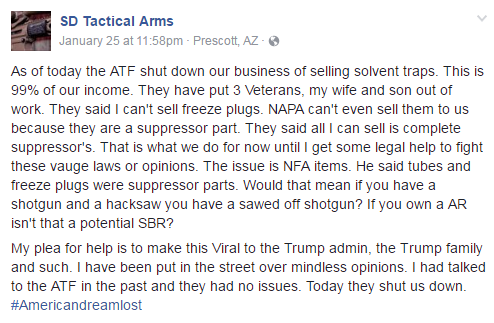ATF Shuts Down SD Tactical’s Solvent Trap Sales
January 27, 2017Call me naive, but I legitimately thought I might be able to go at least a year without writing another political article. With a new, and presumably pro-gun, administration in charge at the White House, the reduced threat to Second Amendment rights had me hoping that I would be able to turn my full focus to reviews and general firearms articles. Just one week after the Presidential Inauguration, I’ve already been proven wrong.
Late Wednesday, SD Tactical Arms posted to Facebook that the ATF visited their business offices and shut down sales of freeze plugs and other parts intended for solvent traps (a device that attaches to a gun’s muzzle and is used to capture leaded cleaning agents), but which are also used by people with approved ATF Forms 1 to make suppressors. The company stated that the ATF had determined that their empty tubes and freeze plugs constitute suppressor parts and cannot be sold without a Federal Firearms License (FFL) and Special Occupational Tax Exemption (SOT). SD Tactical possesses both, but that isn’t the issue here. As suppressor parts, a $200 tax stamp and individual Form 4 would also need to be paid and completed by each buyer for each part.
I wish I could say this move surprised me, but unfortunately, it does not. Since SD Tactical started selling the parts, they’ve operated in a sort of a legal gray area. The amount of effort needed to turn their parts into functional suppressors was rather minimal, which is largely why they were so popular with Form 1 suppressor builders. The ATF’s position on suppressor parts has always been overly inclusive and, at the same time, inconsistent.
That said, the ATF’s reasoning is questionable. Where does a person (or more importantly, the government) draw the line? When does a metal tube or freeze plug become a suppressor part? If I own some extra pipe and some freeze plugs – and I don’t – am I guilty of constructive possession? Suppressors aren’t mechanically complex, and most of the parts required to build a working example can be found at hardware stores throughout the United States.
Situations like this underscore the need for the Hearing Protection Act’s successful passage. In a post-HPA world, SD Tactical’s products would be treated much like 80% receivers are today. There would still be limits to what they could sell without sending them to buyers’ FFLs, but the parts described here would be perfectly fine.
An information security professional by day and gun blogger by night, Nathan started his firearms journey at 16 years old as a collector of C&R rifles. These days, you’re likely to find him shooting something a bit more modern – and usually equipped with a suppressor – but his passion for firearms with military heritage has never waned. Over the last five years, Nathan has written about a variety of firearms topics, including Second Amendment politics and gun and gear reviews. When he isn’t shooting or writing, Nathan nerds out over computers, 3D printing, and Star Wars.


